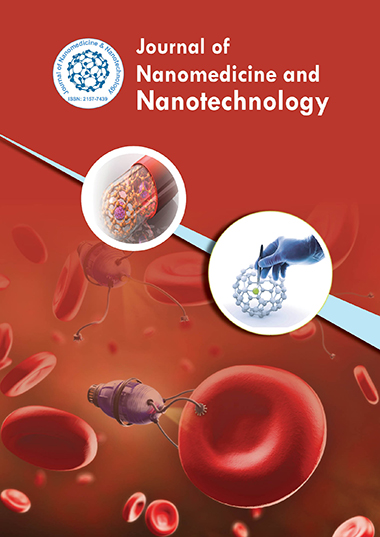索引于
- 打开 J 门
- Genamics 期刊搜索
- 学术钥匙
- 期刊目录
- 研究圣经
- 中国知网(CNKI)
- 西马戈
- 乌尔里希的期刊目录
- 电子期刊图书馆
- 参考搜索
- 哈姆达大学
- 亚利桑那州EBSCO
- OCLC-WorldCat
- SWB 在线目录
- 虚拟生物学图书馆 (vifabio)
- 普布隆斯
- 米亚尔
- 科学索引服务 (SIS)
- 欧洲酒吧
- 谷歌学术
分享此页面
期刊传单

抽象的
Enhancing miRNAs Capture on Polydimethylsiloxane Surface with Nanostructuration
Patrizia Guida, Roberto Lo Savio, Cristina Potrich, Valentina Vaghi, Elena Angeli, Lia Vanzetti, Denise Pezzuoli, Laura Pasquardini, Giuseppe Firpo, Luca Repetto, Diego Repetto, Cecilia Pederzolli and Ugo Valbusa
MicroRNAs (miRNAs) modulate gene expression at post-transcriptional level, while their aberrant presence in circulation correlates with the most common human disorders such as cancer, neuro-degenerative and immune-related diseases. Currently, the pre-concentration of such important bio-markers present at low concentrations in biological fluids, which would make their identification and quantification easier, remains a challenging issue for biosensor-based non-invasive analyses. This paper describes a new nanostructure-based polymeric platform for enhancing adsorption capability of microRNAs, such as the cancer-associated miRNA-21. In this purification strategy, a nano-hole pattern was manufactured by Replica Molding (REM) and fabricated on Polydimethylsiloxane (PDMS) large-areas. Interestingly, the microRNAs adsorption is resulted favoured by this proper topography. In planning to concentrate the patient’s miRNAs used as biomarkers, PDMS surfaces with nanostructures were not further coated with any adhesive molecules to prevent forced surface-biomolecule adhesive regions and evaluate the mere influence of the surface topography and the ionic microenvironment. Both the nanopattern and the solution ionic strength promote adsorption of miRNAs by a sensitive and efficient method, which do not need probe immobilization, enzymatic reaction or further treatments. These studies revealed a two-fold higher fluorescent signal after solid-phase purification protocol compared to standard PDMS obtained by spin-coating. While this paper focuses on nanostructure-miRNA adsorption, the general strategy of trapping miRNAs on nano-hole patterns should be broadly applicable for purification of other miRNAs through microfluidic biosensors and should have basic as well as clinical research applications.